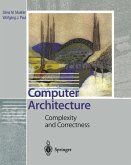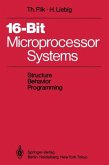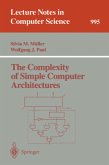It is a great pleasure to write a preface to this book. In my view, the content is unique in that it blends traditional teaching approaches with the use of mathematics and a mainstream Hardware Design Language (HDL) as formalisms to describe key concepts. The book keeps the "machine" separate from the "application" by strictly following a bottom-up approach: it starts with transistors and logic gates and only introduces assembly language programs once their execution by a processor is clearly de ned. Using a HDL, Verilog in this case, rather than static circuit diagrams is a big deviation from traditional books on computer architecture. Static circuit diagrams cannot be explored in a hands-on way like the corresponding Verilog model can. In order to understand why I consider this shift so important, one must consider how computer architecture, a subject that has been studied for more than 50 years, has evolved. In the pioneering days computers were constructed by hand. An entire computer could (just about) be described by drawing a circuit diagram. Initially, such d- grams consisted mostly of analogue components before later moving toward d- ital logic gates. The advent of digital electronics led to more complex cells, such as half-adders, ip- ops, and decoders being recognised as useful building blocks.
From the reviews: "The first impression is that the book tries to cover all aspects of computer design. ... To summarize, the book lives up to its title. It is a practical and interesting introduction to computer architecture. ... It is a good reference book that could be used as a guide in a computer architecture curriculum." (Javier Castillo, ACM Computing Reviews, August, 2009) "Page ... has tried to include 'topics every computer science student should have at least a basic grasp of.' ... The book is clearly written and technically accurate. The exercises are good, with extensive solutions provided. The volume admirably serves its goal of offering a comprehensive introduction to computer science. Summing Up: Highly recommended. Lower- and upper-division undergraduates, two-year technical program students, research/faculty, practitioners, and general readers." (C. Vickery, Choice, Vol. 47 (4), December, 2009)








